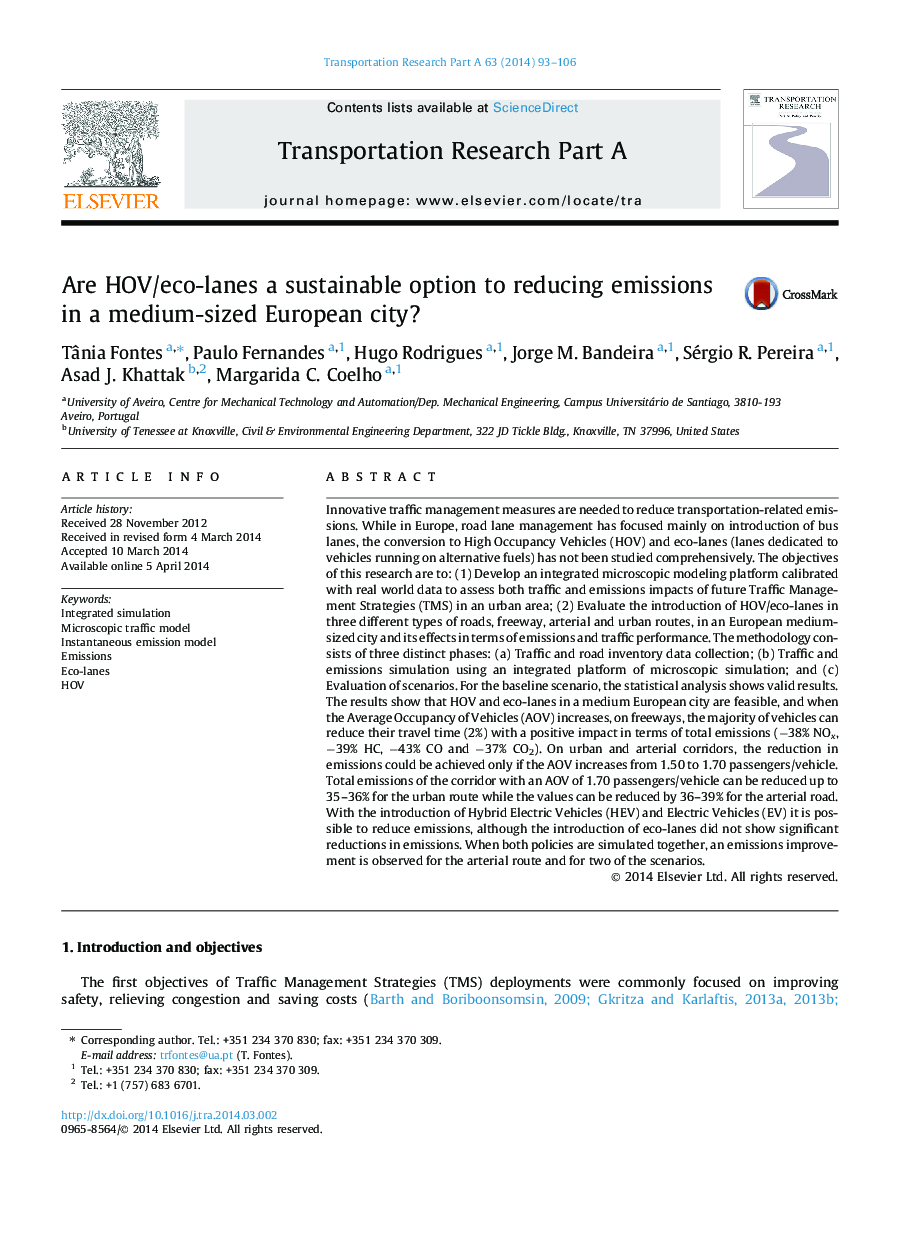| کد مقاله | کد نشریه | سال انتشار | مقاله انگلیسی | نسخه تمام متن |
|---|---|---|---|---|
| 312036 | 534173 | 2014 | 14 صفحه PDF | دانلود رایگان |

• We use a microscale modeling platform to assess Traffic Management Strategies.
• We study the impact of HOV/eco-lanes in different road types on emissions.
• HOV/eco-lanes in a medium European city are feasible in terms of emissions.
• On freeways, passengers can reduce travel time (2%) and emissions (37% to 43%).
• On urban and arterials, emissions can be reduced if the AOV increases.
Innovative traffic management measures are needed to reduce transportation-related emissions. While in Europe, road lane management has focused mainly on introduction of bus lanes, the conversion to High Occupancy Vehicles (HOV) and eco-lanes (lanes dedicated to vehicles running on alternative fuels) has not been studied comprehensively. The objectives of this research are to: (1) Develop an integrated microscopic modeling platform calibrated with real world data to assess both traffic and emissions impacts of future Traffic Management Strategies (TMS) in an urban area; (2) Evaluate the introduction of HOV/eco-lanes in three different types of roads, freeway, arterial and urban routes, in an European medium-sized city and its effects in terms of emissions and traffic performance. The methodology consists of three distinct phases: (a) Traffic and road inventory data collection; (b) Traffic and emissions simulation using an integrated platform of microscopic simulation; and (c) Evaluation of scenarios. For the baseline scenario, the statistical analysis shows valid results. The results show that HOV and eco-lanes in a medium European city are feasible, and when the Average Occupancy of Vehicles (AOV) increases, on freeways, the majority of vehicles can reduce their travel time (2%) with a positive impact in terms of total emissions (−38% NOx, −39% HC, −43% CO and −37% CO2). On urban and arterial corridors, the reduction in emissions could be achieved only if the AOV increases from 1.50 to 1.70 passengers/vehicle. Total emissions of the corridor with an AOV of 1.70 passengers/vehicle can be reduced up to 35–36% for the urban route while the values can be reduced by 36–39% for the arterial road. With the introduction of Hybrid Electric Vehicles (HEV) and Electric Vehicles (EV) it is possible to reduce emissions, although the introduction of eco-lanes did not show significant reductions in emissions. When both policies are simulated together, an emissions improvement is observed for the arterial route and for two of the scenarios.
Journal: Transportation Research Part A: Policy and Practice - Volume 63, May 2014, Pages 93–106